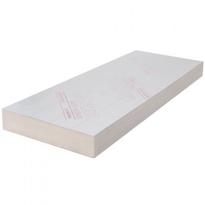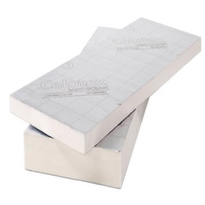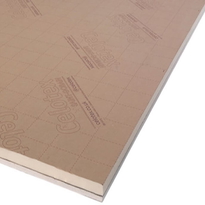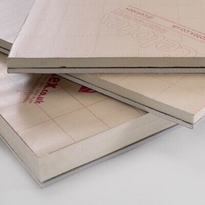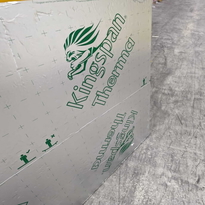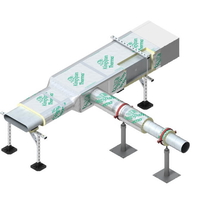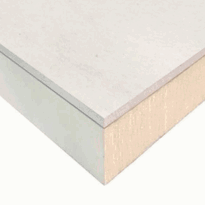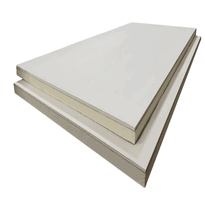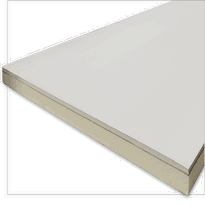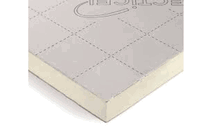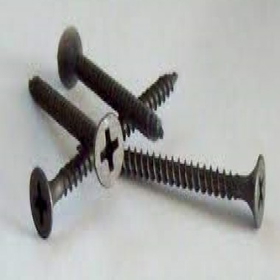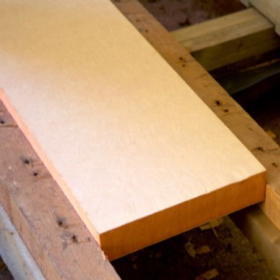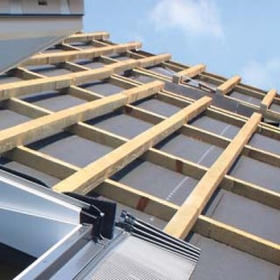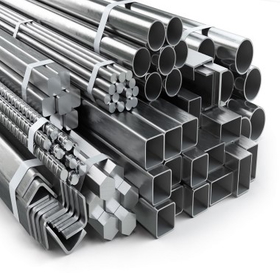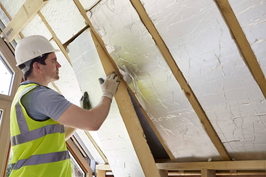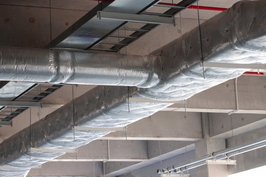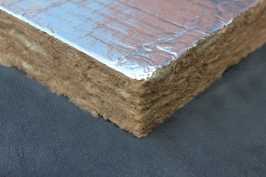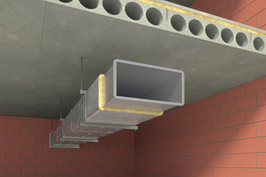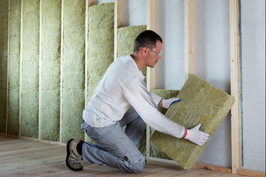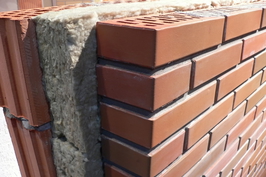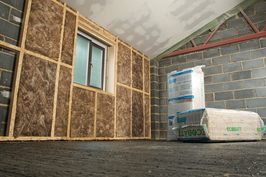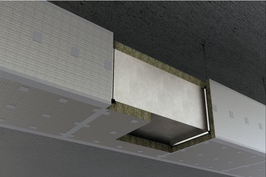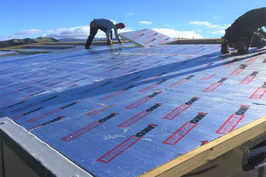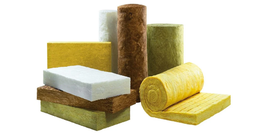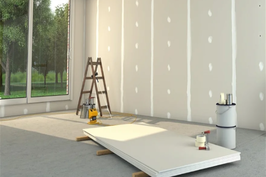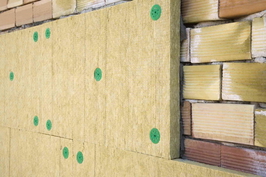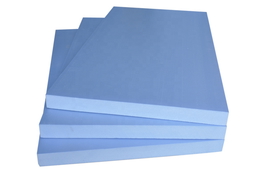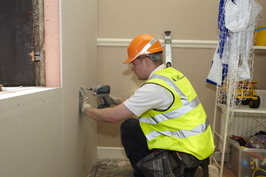PIR (Polyiso) Insulation
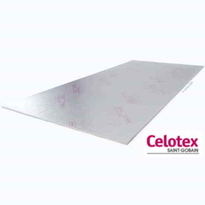
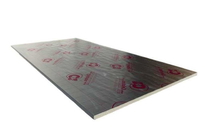
Celotex GA4000 - High-Performance PIR Insulation Board - 2400 x 1200mm
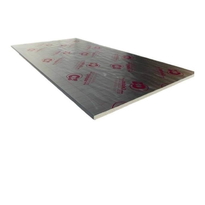
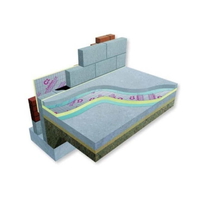
Celotex XR4000 - High-Performance PIR Insulation Board - 2400 x 1200mm
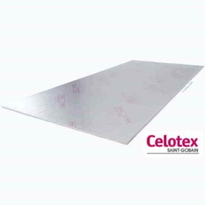
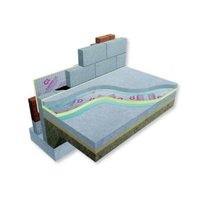
Celotex TB4000 - High-Performance PIR Insulation Board - 2400 x 1200mm
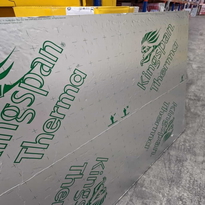
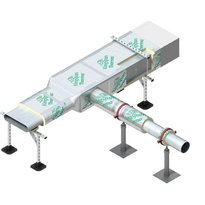
Kingspan Aluminium Faced Thermoduct Insulation Boards - 2.4M x 1.2M (2.88Sqm)
Similar Categories
PIR Insulation Board (polyisocyanurate): A Guide to Choosing and Installing the Best Insulation for Your Home
Insulation is one of the most important aspects of any building, as it helps to keep the indoor temperature comfortable, reduce energy bills, and protect the environment. However, not all insulation materials are created equal, and choosing the right one for your project can be a daunting task.
That’s why we have created this guide to help you learn more about PIR (Polyiso) Insulation, one of the most popular and effective insulation materials on the market. In this guide, we will cover:
- What is PIR (Polyiso) Insulation and how does it work?
- What are the benefits of PIR (Polyiso) Insulation?
- What are the different types of PIR (Polyiso) Insulation products available at Buy Insulation Online?
- How to choose the best PIR (Polyiso) Insulation product for your project?
- How to install PIR (Polyiso) Insulation correctly and safely?
By the end of this guide, you will have a better understanding of PIR (Polyiso) Insulation and how to use it for your home improvement project. Let’s get started!
What is PIR (Polyiso) Insulation and how does it work?
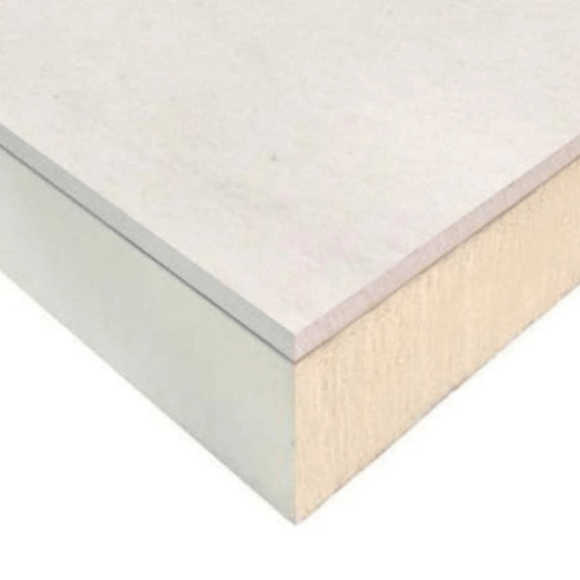 PIR (Polyiso) Insulation is a type of rigid foam insulation that is made from polyisocyanurate, a synthetic polymer. PIR (Polyiso) Insulation has a high thermal resistance, which means that it can prevent heat transfer very effectively. PIR (Polyiso) Insulation is also lightweight, durable, fire-resistant, and moisture-resistant, making it suitable for various applications.
PIR (Polyiso) Insulation is a type of rigid foam insulation that is made from polyisocyanurate, a synthetic polymer. PIR (Polyiso) Insulation has a high thermal resistance, which means that it can prevent heat transfer very effectively. PIR (Polyiso) Insulation is also lightweight, durable, fire-resistant, and moisture-resistant, making it suitable for various applications.
PIR (Polyiso) Insulation works by creating a continuous layer of insulation that blocks the flow of heat between the inside and outside of a building. This reduces the amount of energy needed to heat or cool the building, resulting in lower energy bills and lower carbon emissions. PIR (Polyiso) Insulation can also improve the sound insulation and air quality of a building, as it can reduce noise transmission and prevent the growth of mould and mildew.
What are the benefits of PIR (Polyiso) Insulation?
PIR (Polyiso) Insulation has many benefits that make it an ideal choice for insulation projects. Some of the main benefits are:
- High thermal performance: PIR (Polyiso) Insulation has one of the highest R-values (a measure of thermal resistance) of any insulation material, ranging from 5.6 to 8.0 per inch of thickness. This means that it can provide more insulation with less material, saving space and money.
- Versatility: PIR (Polyiso) Insulation can be used for various applications, such as walls, roofs, floors, ceilings, and pipes. It can also be installed in different ways, such as between studs, over rafters, or under tiles. PIR (Polyiso) Insulation can also be combined with other insulation materials, such as mineral wool or plasterboard, to create composite insulation systems that offer enhanced performance and functionality.
- Durability: PIR (Polyiso) Insulation is designed to last for a long time, as it is resistant to ageing, weathering, and physical damage. PIR (Polyiso) Insulation can also withstand high temperatures and fire, as it has a low flammability and a high ignition temperature. PIR (Polyiso) Insulation can also resist moisture and vapour, as it has a low water absorption and a high vapour resistance.
- Eco-friendliness: PIR (Polyiso) Insulation is an environmentally friendly insulation material, as it can help to reduce the energy consumption and carbon footprint of a building. PIR (Polyiso) Insulation is also made from recycled and renewable materials, such as vegetable oils and PET bottles. PIR (Polyiso) Insulation is also free of ozone-depleting substances, such as CFCs and HCFCs, and has a low global warming potential.
What are the different types of PIR (Polyiso) Insulation products available at Buy Insulation Online?
At Buy Insulation Online, we offer a wide range of PIR (Polyiso) Insulation products that can suit any project and budget. Some of the products that we offer are:
- Celotex GA4000 Aluminium-Faced High Performance PIR Insulation Board: This is a general-purpose PIR insulation board that can be used for walls, floors, and roofs. It has an aluminium foil facing on both sides that provides a high thermal performance and a low emissivity. It is available in various thicknesses, from 50mm to 100mm, and has an R-value of 6.0 to 12.0 per board.
- Warmline PIR Insulated Plasterboard: This is a composite insulation product that consists of a PIR insulation board bonded to a plasterboard. It can be used for walls and ceilings and provides both thermal and acoustic insulation. It is available in various thicknesses, from 27.5mm to 72.5mm, and has an R-value of 1.2 to 4.0 per board.
- Kingspan Aluminium-Faced ThermaDuct Insulation Board: This is a PIR insulation board that is specially designed for ductwork and pipework. It has an aluminium foil facing on both sides that provides a high thermal performance and a low emissivity. It is available in various thicknesses, from 25mm to 50mm, and has an R-value of 5.0 to 10.0 per board.
- Xtratherm Foil-Faced PIR Rigid Insulation Board: This is a PIR insulation board that can be used for walls, floors, and roofs. It has a foil facing on both sides that provides a high thermal performance and a low emissivity. It is available in various thicknesses, from 25mm to 150mm, and has an R-value of 5.0 to 30.0 per board.
- Tekwarm Thermal Laminate PIR Insulated Plasterboard: This is a composite insulation product that consists of a PIR insulation board bonded to a plasterboard. It can be used for walls and ceilings and provides both thermal and acoustic insulation. It is available in various thicknesses, from 27.5mm to 82.5mm, and has an R-value of 1.2 to 4.5 per board.
- Recticel Eurothane GP PIR Insulation Board: This is a general-purpose PIR insulation board that can be used for walls, floors, and roofs. It has a kraft paper facing on both sides that provides a high thermal performance and a low emissivity. It is available in various thicknesses, from 25mm to 140mm, and has an R-value of 5.0 to 28.0 per board.
How to choose the best PIR (Polyiso) Insulation product for your project?
Choosing the best PIR (Polyiso) Insulation product for your project depends on several factors, such as:
- The type of project: Different projects may require different types of PIR (Polyiso) Insulation products, depending on the location, size, and shape of the area to be insulated. For example, if you are insulating a wall, you may want to use a PIR insulation board that can fit between the studs or a PIR insulated plasterboard that can be fixed directly to the wall. If you are insulating a roof, you may want to use a PIR insulation board that can be installed over the rafters, or under the tiles. If you are insulating a pipe, you may want to use a PIR insulation board that can be wrapped around the pipe, or cut to fit the pipe diameter.
- The thermal performance: Different PIR (Polyiso) Insulation products have different R-values, which indicate how well they can prevent heat transfer. The higher the R-value, the better the thermal performance. However, the R-value also depends on the thickness of the product, so you may need to balance the thermal performance with the space available. For example, if you have limited space, you may want to use a thinner PIR insulation product that has a higher R-value per inch, such as the Celotex GA4000 Aluminium-Faced High-Performance PIR Insulation Board. If you have more space, you may want to use a thicker PIR insulation product that has a lower R-value per inch, but a higher R-value per board, such as the Xtratherm Foil Faced PIR Rigid Insulation Board.
- The budget: Different PIR (Polyiso) Insulation products have different prices, which depend on the quality, quantity, and availability of the product. The price also reflects the cost of installation, as some products may require more labour and materials than others. For example, if you are on a tight budget, you may want to use a cheaper PIR insulation product that can provide a decent thermal performance, such as the Recticel Eurothane GP PIR Insulation Board. If you have more money to spend, you may want to use a more expensive PIR insulation product that can provide superior thermal performance, such as the Kingspan Aluminium-Faced ThermaDuct Insulation Board.
To help you choose the best PIR (Polyiso) Insulation product for your project, you can use our online calculator, which can estimate the amount of insulation you need, the cost of the insulation, and the energy savings you can achieve. You can also contact our customer service team, who can provide you with expert advice and guidance.
How to install PIR (Polyiso) Insulation correctly and safely?
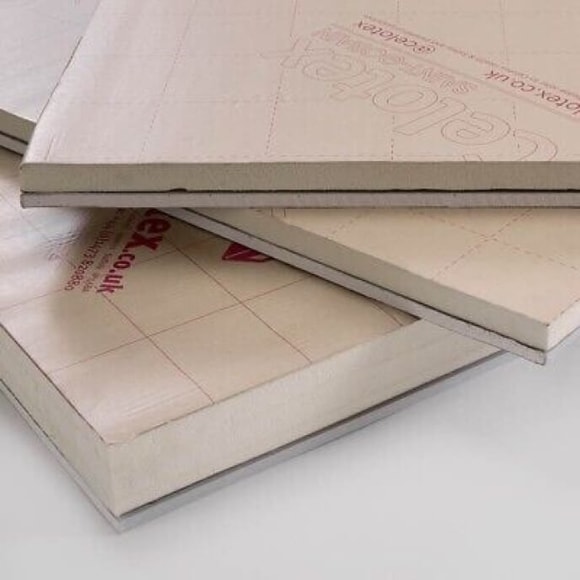 Installing PIR (Polyiso) Insulation correctly and safely is essential to ensure the optimal performance and durability of the insulation. Depending on the type of PIR (Polyiso) Insulation product you choose, you may need different tools and methods to install it. However, some general steps and tips that apply to most PIR (Polyiso) Insulation products are:
Installing PIR (Polyiso) Insulation correctly and safely is essential to ensure the optimal performance and durability of the insulation. Depending on the type of PIR (Polyiso) Insulation product you choose, you may need different tools and methods to install it. However, some general steps and tips that apply to most PIR (Polyiso) Insulation products are:
- Prepare the surface: Before installing PIR (Polyiso) Insulation, you need to make sure that the surface is clean, dry, and level. You may need to remove any existing insulation, plaster, or debris that may interfere with the installation. You may also need to repair any cracks, holes, or gaps that may affect the insulation.
- Measure and cut the insulation: Next, you need to measure the area that you want to insulate, and cut the PIR (Polyiso) Insulation product to the appropriate size and shape. You can use a tape measure, a pencil, and a straight edge to mark the insulation, and a sharp knife, a saw, or a cutter to cut the insulation. You should try to cut the insulation as accurately as possible, to avoid any gaps or overlaps that may reduce the thermal performance.
- Fix the insulation: Then, you need to fix the PIR (Polyiso) Insulation product to the surface, using the appropriate method and materials. For example, if you are using a PIR insulation board, you may need to use nails, screws, or adhesive to secure the board to the studs, rafters, or joists. If you are using a PIR-insulated plasterboard, you may need to use plaster, tape, or joint compound to finish the edges and corners of the board. You should follow the manufacturer’s instructions and recommendations for the best results.
- Cover the insulation: Finally, you need to cover the PIR (Polyiso) Insulation product with a suitable material, such as plaster, tiles, or cladding, to protect the insulation from damage and exposure. You should also ensure that the insulation is properly sealed and ventilated, to prevent any moisture or air infiltration that may compromise the insulation.
When installing PIR (Polyiso) Insulation, you should also follow some safety precautions, such as:
- Wear protective gear: PIR (Polyiso) Insulation can be hazardous to your health if you inhale or touch it, as it may contain dust, fibres, or chemicals that can irritate your skin, eyes, nose, throat, or lungs. Therefore, you should wear protective gear, such as gloves, goggles, masks, and clothing, to avoid any contact with the insulation.
- Use proper tools: PIR (Polyiso) Insulation can be difficult to cut or handle, as it may be sharp, heavy, or brittle. Therefore, you should use proper tools, such as knives, saws, or cutters, that are sharp, clean, and suitable for insulation. You should also use safe tools, such as hammers, drills, or screwdrivers, that are in good condition and have no defects.
- Dispose of waste: PIR (Polyiso) Insulation can be harmful to the environment if you dispose of it improperly, as it may contain materials that are not biodegradable or recyclable. Therefore, you should dispose of the waste in a responsible manner, such as using a bin, a bag, or a container, that is labelled and sealed. You should also follow the local regulations and guidelines for the disposal of insulation waste.
Understanding Thermal Insulation and its Types
Thermal insulation plays a pivotal role in maintaining a building's energy efficiency and regulating internal temperatures. Among the various options available, Polyisocyanurate (PIR) insulation boards stand out for their exceptional thermal properties and versatility.
These boards, typically sized at 2400mm x 1200mm, boast a rigid PIR core that offers superior insulation capabilities. Used extensively in both new builds and renovations, PIR boards are renowned for their high-performance insulation values and efficiency in reducing thermal bridges within structures.
Exploring PIR Insulation and its Applications
PIR insulation, derived from polyisocyanurate rigid foam, stands as a composite board, often faced with foil or other materials for added durability. Its structure involves a blowing agent that enhances its insulating properties, making it an ideal choice for cavity walls, internal walls, pitched roofs, and flat roof insulation.
Notably, the thinner profiles, such as the 15mm Thin-R PIR, provide efficient insulation without compromising space. Furthermore, PIR boards are frequently used in partial fill cavity wall insulation, combining insulation and dry lining, or even integrated with decking in flat roof applications.
Understanding the construction and efficiency of PIR insulation helps achieve a certified thermal and high-performance insulation system, meeting the demands of modern construction for energy-efficient buildings.
Benefits and Considerations of PIR Insulation
PIR insulation stands out for its superior thermal insulation capabilities, offering efficient solutions for various architectural requirements. However, it's crucial to note that while PIR boards provide excellent thermal resistance, consideration for proper installation techniques to mitigate thermal bridges is essential.
Additionally, understanding the distinction between PIR (polyisocyanurate) and PUR (polyurethane) insulation boards ensures informed decision-making when selecting the most suitable insulation for a project.
By leveraging the exceptional attributes of PIR insulation, architects, builders, and homeowners can create energy-efficient spaces while reducing long-term energy costs and environmental impact.
Conclusion
PIR (Polyiso) Insulation is a great insulation material that can provide you with many benefits, such as high thermal performance, versatility, durability, and eco-friendliness. However, choosing and installing PIR (Polyiso) Insulation can be challenging, as you need to consider various factors, such as the type of project, the thermal performance, the budget, the tools, and the methods.
That’s why we have created this guide to help you learn more about PIR (Polyiso) Insulation and how to use it for your home improvement project. We hope that this guide has been helpful and informative and that you have found the best PIR (Polyiso) Insulation product for your project.
If you have any questions, comments, or feedback, please feel free to contact us at Buy Insulation Online, where we offer a wide range of PIR (Polyiso) Insulation products at competitive prices. We also offer fast and free delivery, easy and secure payment, and excellent customer service. We look forward to hearing from you and helping you with your insulation needs.
Frequently Asked Questions
Q: What are the different uses for PIR insulation boards?
A: PIR insulation boards are versatile and can be used for insulating walls, roofs, floors, and various other building components. They are commonly applied in both new construction and renovations to improve thermal performance.
Q: How does PIR insulation compare to other types of insulation?
A: PIR insulation offers superior thermal performance compared to many other types of insulation, such as polyurethane (PUR) or polystyrene. Its high R-value and low thermal conductivity make it a preferred choice for energy-efficient building designs.
Q: What are the benefits of using PIR insulation in stud walls?
A: PIR insulation is well-suited for stud wall applications due to its rigidity and thermal efficiency. It helps to minimize heat loss through the walls and contributes to creating a comfortable and energy-efficient indoor environment.
Q: Can PIR insulation be used in timber frame construction?
A: Yes, PIR insulation is often used in timber frame construction to enhance the thermal performance of the building envelope. It can be installed in various assemblies to effectively insulate external walls, roofs, and floors.
Q: What are the key considerations when choosing PIR insulation for a building project?
A: When selecting PIR insulation products, it is important to consider factors such as the desired level of thermal resistance, compatibility with vapour control measures, and compliance with building codes and standards. Additionally, the suitability of PIR insulation for specific applications, such as roof or wall insulation, should be carefully evaluated based on project requirements.
